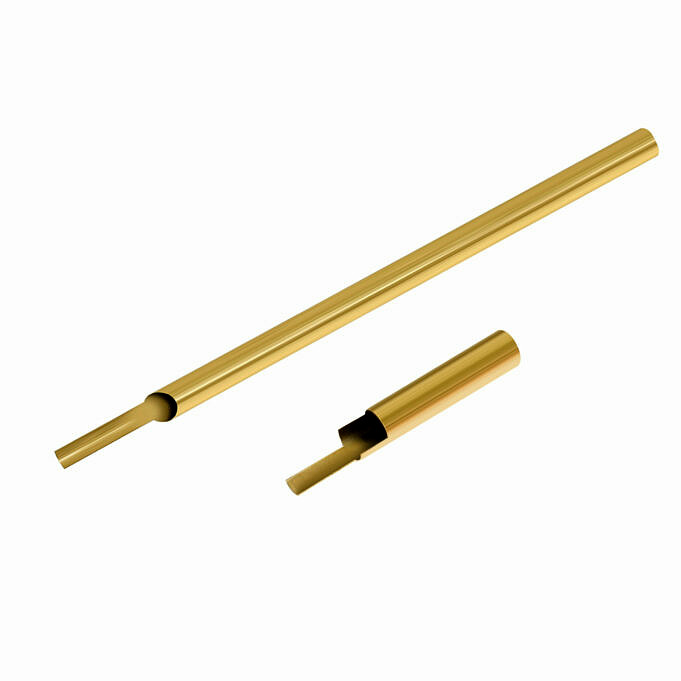When I was first starting out as an early modder, I think one of the things that terrified me the most was the idea of building a brass breech. I became pretty good at simple muzzle-loading rebarrels with materials ranging from old Crayola markers to brass to the newly-adopted 13(ish)mm aluminum, but never a proper breech. To me, it was always so scary. There were helpful guides out there like the OzNerf approach to the Sleeper Breech or the ModWorks take on the Angel Breech, but they seemed so daunting. I was completely lost. I was also confused by the fact that many modders who posted about their new brassed blasters didn’t know exactly how to brass it. It’s not something I feel alone in feeling this way.
Well, that recently changed just this past week, actually. I decided to take the plunge because I wanted a little more power from my Ultra Tek Sentinel. My original plan was for a Sleeper Breech to go with it. But, I failed. I made it over and over again until I had nothing left but scraps. I didn’t let that discourage me. Ish? Is it?
Let’s first take a look at what the breech side looks like. Pay no attention to the horrible cuts from my too-fast Dremel setting and shaky hands. The key here is to notice the brass itself. After cutting out a 6 cm length of 17/81 cm brass with my trusty pipe-cutter, I went ahead and tried to merge it down in to the original plastic breech. The breech is not the entire length, but it does not have to be. You just need enough for the dart itself.
As for putting this length in, wellllresults may vary. I snapped the dart tooth as well as cracking the front of the breech.
Whoops. It may have seemed that I had widened it enough using a 9/41 cm (I do such things manually), but there is always more room! Still, this turned out to be a good thing, as youll see later. After I had cut the half-pipe with my Dremel, I removed the damaged plastic. The V-shaped cut-out is covered in brass. A little trick I learned dealing with the abysmal Slingfire. For a better seal, cover it.
One quick tip on Dremel cutting brass or any other barreling material: You can never go too smooth. I know by the pictures my cuts need work and theyll improve on the next one, and the next, and so forth but I sanded the bajeebus out of it after I was done. You want as little friction between your parts and your darts as possible. Any slight snag points could potentially rip your darts or bend your brass, and nobody wants that.
Now, lets move on to the easier part: the barrel! It is easier than I thought, but it will require patience. You will need 9/41 cm of brass for this. I chose to notto cut or half-pipe mine. It is onlybrass tub. My length came to 17 cm, since thats what I had sitting around, but I hear you can go as far up to 8 and your barrel will be fine. The barrel itself is wrapped in electrical tape, as you see below, and said barrel is wrapped in
You’re almost done if you have been following me so far! Next, you need to make sure that everything is in line. As we discussed earlier, my cuts need improvement so youll notice small gaps (circled) that youdo notwant on your own projects. These gaps make it juuust annoying enough sometimes when feeding darts. Although my Sentinel is functional, it could be more efficient. Your assembly should look similar to mine, but it could be so much more. The 17/81 cm half-pipe feeds in to the end of the 9/41 cm barrel for a slightly better seal, and away your darts will fly!
This is all there is to it for the Lazy Breech.
It’s hard to believe that I let this task intimidate me so much for so long. But, hopefully your intimidation will soon end. Although this won’t make your Sentinel an unstoppable sniping machine as the MTB guys can claim, it is a start. You can improve your blaster with a little bit of work and some TLC. Only you are the only thing that can hold you back.



